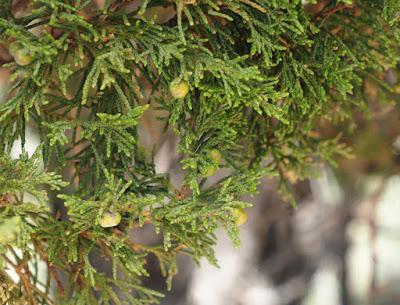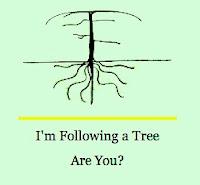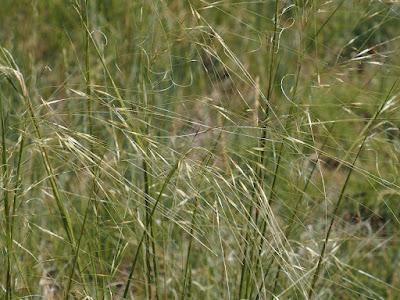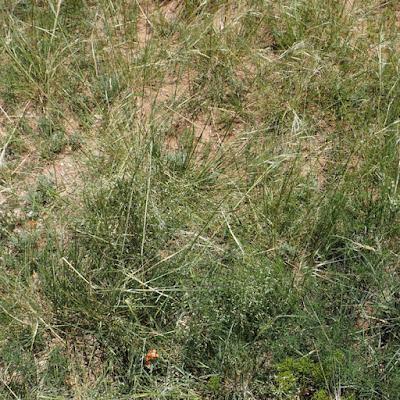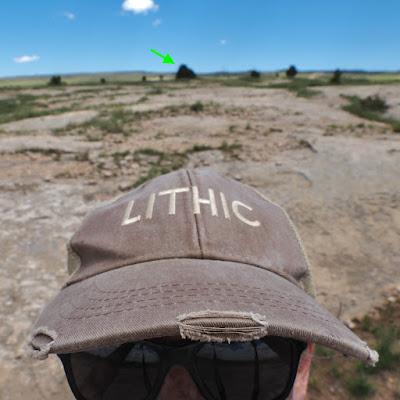
My field assistant stayed home (too warm). But I managed to find both my trees and the shutter release button, thereby verifying my visit.
Several months had passed since I last visited the Rocky Mountain Junipers I'm following this year. What a changed landscape! We had a cool wet spring, and a cool wet summer so far. Many are wondering—have we've ever seen the Laramie Basin so green so late?I suppose it still looks arid to those elsewhere. But for us, this is LUSH!
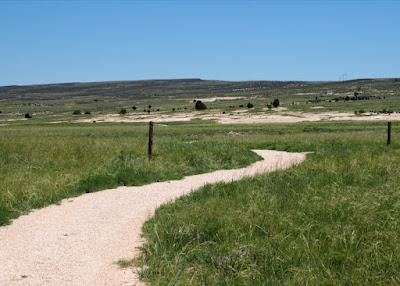
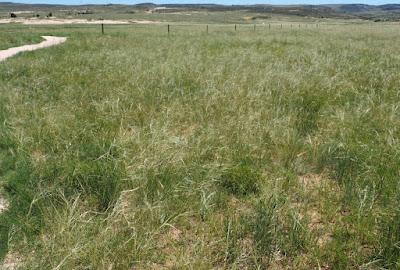
Needle-and-Thread, Hesperostipa (Stipa) comata.
It was impossible to capture the grass diversity in a photo. For example there are least four species in the one below: Needle-and-Thread, Indian Ricegrass, Blue Grama, and Western Wheatgrass.Grass enthusiasts can click to enlarge the image and search for species.
I soon left the trail to cross slabby limestone to the junipers I'm following.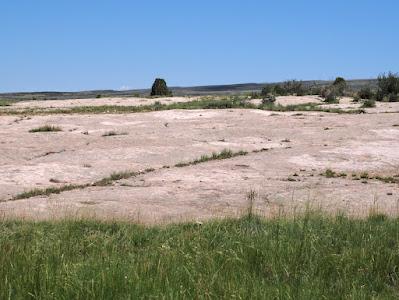

Hello little Limber Pine. I'm back.


Berries can barely be spotted in the foliage.
